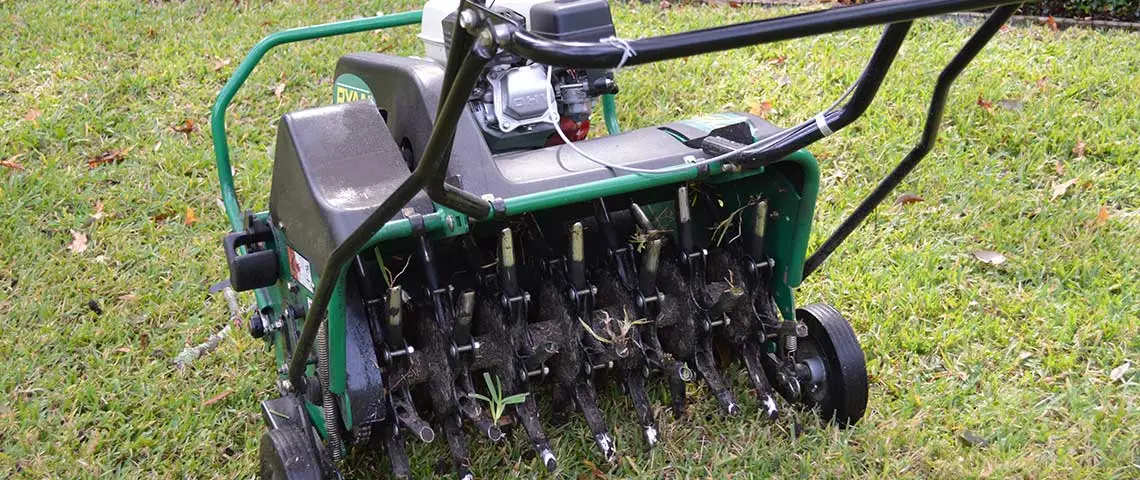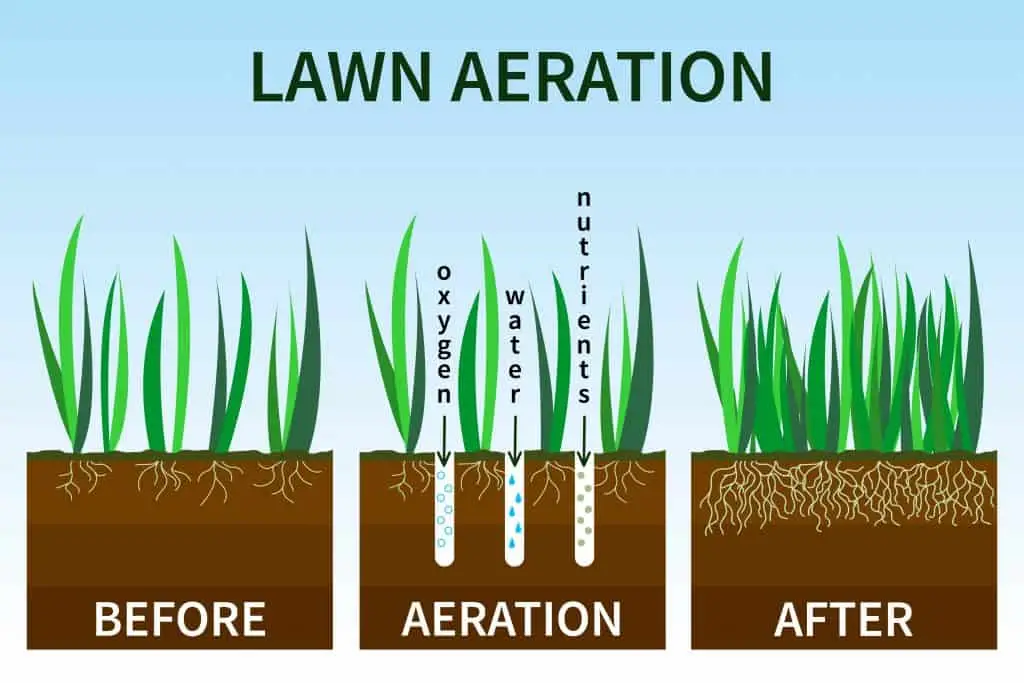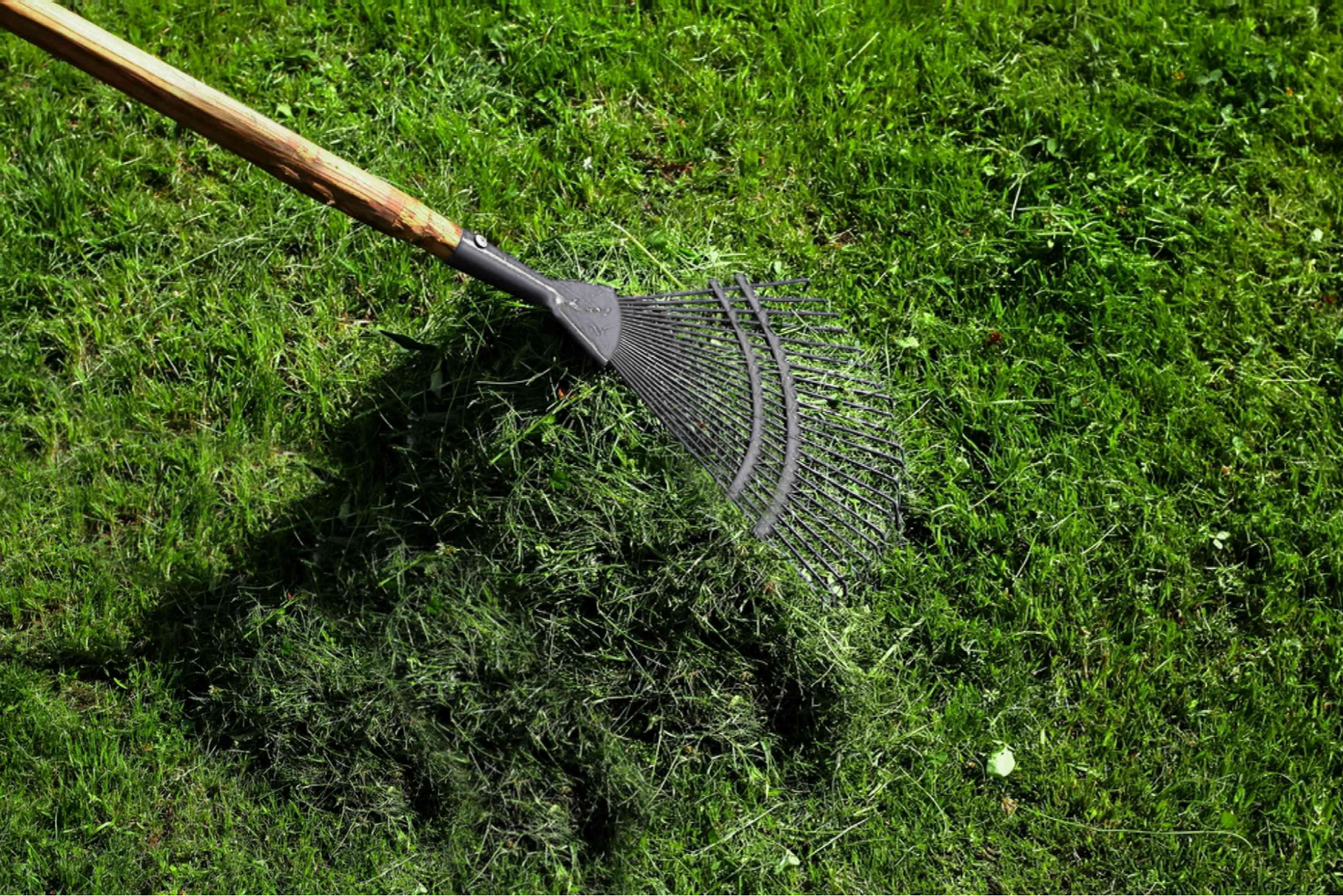Who doesn’t want a bright green lawn? We all do, right? Fertilizing is an important part of getting such a green lawn. But if you mess up with the time of fertilizing, and aerating. So, knowing when to fertilize is essential.
So, when should you fertilize before or after aerating?
You should apply fertilizer after you complete aerating, within 48 hours to be precise. It will help your lawn to grasp more oxygen and roots will penetrate into the soil deeper. You should aerate your lawn early in the spring or fall if you reside in a cooler zone. Then, late spring or early summer would be a perfect time for warm-season grasses. Your lawn should be aerated after it has been moistened.
Continue reading the article to know the actual process of fertilizing after aerating. Also, the perfect timing has been included in the article. So, hang tight to know them broadly.
Should You Fertilize Before or After Aerating?
You should aerate first then apply fertilizer. Aerating before fertilization enhances oxygenation and allows grass roots to penetrate deeper into the soil. Aeration is particularly important in compact or clay soils, as it helps fertilizer reach deeper roots.
Aerating the lawn before fertilizer increases the effectiveness of the fertilizer. According to gardening expert Drew Swainston from Homes & Gardens, it is advisable to water and fertilize your lawn a few days after aerating, ideally within 48 hours.
By this time, the fertilizer has soaked deep into the soil through the holes created during aeration, making it easily accessible to the grassroots.
Alternatively, you can wait the full two days (and also seed your lawn, if you’re so inclined). Either way, you should feel confident that you’re caring for your lawn in the “right order” because even if the skies open up the minute you’ve finished fertilizing, the product won’t wash away. Since you’ve aerated first, the fertilizer granules will have tumbled down all those little chutes; they won’t wash away.

After applying a high-nitrogen, organic fertilizer, get in the habit of watering your lawn thoroughly, which means twice a week for between 30 and 60 minutes. It shouldn’t be long before those soil plugs melt.
As per lawn experts, oxygen should be prioritized more than light and water to maintain a healthy lawn. Aeration not only facilitates air movement but also relieves soil compaction and enhances water drainage, making it an essential component of your lawn care routine.
Can You Fertilize Without Aerating?
Well, you can fertilize without aerating but it’s recommended not to. It is crucial to have loose soil for grass seeds to grow properly with improved water and nutrient uptake.
New grass seeds can be supplied with oxygen, nutrients, and minerals by aerating compacted soil. By increasing nutrient delivery, the roots become stronger and the lawn grows faster and denser. Lack of nutrients affects the overall health of any plant. It also makes the plumeria stem wrinkled.

What Is the Perfect Way of Fertilizing After Aerating?
You can improve soil compaction by aerating your lawn, and nutrients, air, and water will reach grass roots more effectively. After aerating, fertilize the grass to provide nutrients it can more easily absorb after the aeration process.
Required Tools
To perform this task you need some special tools. Let’s learn about those tools.
Procedures to Fertilize After Aerating
Despite the fact that the process won’t be completed all at once, it is quite simple. In order to fertilize your lawn after it has been aerated, follow these steps:
Step 1:
First, you need to dethatch your lawn by using a rake. Also, you need to make sure to remove any debris such as gravel that may have unfiltered the grass.

Step 2:
It’s time to aerate your lawn. If your lawn is moist when you aerate it, you will get the best results. If possible, wait for rainfall or water your lawn the day before starting the process.
Conversely, if the area has experienced heavy rainfall, it’s advisable to let the lawn dry out a bit first. Aeration can be performed using plug aerators or spikes.
Step 3:
You need to fertilize your lawn using a seed spreader (refer to instructions below) within 48 hours. And you need to follow the manufacturer’s guidelines for application and aftercare, including watering.
Additionally, this would be an opportune time to consider overseeding the lawn.
What Is the Perfect Time to Aerate?
Generally, mid to late spring and early to mid-fall are optimal times to aerate and fertilize. The timing for aerating and fertilizing your lawn will slightly vary depending on different grass type present in your yard. It’s crucial to consider the grass type since aerating and fertilizing a dormant lawn can induce stress on it.
The best time to aerate your lawn depends on the type of grass you have and the climate of your region. The cool and warm season grass aerating time would be different.
| Grass type | Time |
| Cool season grass | Early spring or fall |
| Warm season grass | Late spring or early summer |
Cool Season Grass:
Kentucky bluegrass, perennial ryegrass, fine fescue, and tall fescue are commonly grown cool-season grass. For cool-season grasses, which are typically found in northern or cooler zones, it’s advisable to carry out treatments in early spring (starting from March) or early fall.
The temperature is cooler this time which is usually the best time to aerate them. This is because the grass is actively growing and can recover more quickly from the aeration process.
Also, aerating in the fall can help prepare the grass for winter by improving water and nutrient absorption. That promotes healthy root growth and enhances the grass’s ability to withstand cold temperatures.
Warm Season Grass:
Warm-season grasses are commonly found in warmer southern zones. Warm-season grass should be aerated and fertilized during late spring or early summer, typically around April or May.
This is because warm-season grasses, such as Bermuda grass, Zoysia grass, and St. Augustine grass, grow most vigorously during warm weather. Also, aeration is necessary during this time to promote healthy root growth and improve nutrient absorption.
If you aerate warm-season grasses during the cooler months when they are dormant, the turf can be damaged and growth may be stunted or delayed.
What Kind of Fertilizer to Use After Aeration?
Once you have aerated your lawn, it is recommended to fertilize it right away to take advantage of the increased oxygen exposure. Also, it encourages the growth of a lush and attractive lawn.
Actually, the type and amount of fertilizer you should use will depend on the size and grass type of your lawn. In order to promote healthy growth and development of the lawn, you should apply a fertilizer that is high in nitrogen and phosphorus. Lack of phosphorus in fertilizer also makes calla lily flowers turn green.
Nitrogen is one of the most important nutrients for plant growth and for greening grass. so it would be best to give the grass fertilizer specially made for lawns that contain nitrogen (e.g. Pennington Ultragreen, Covington Liquid Fertilizer, ). However, if you want to avoid the guesswork, hiring a professional is an easy solution.
Pro Tips for Aerating And Fertilizing the Lawn
Everyone wants to do their job perfectly. If you learn some tips and maintain them while working, it will make your job easy. Getting your lawn aerated and fertilized is easy if you follow these tips:
- Never ever aerate your dry lawn. Always moisten your lawn before aerating. It will soften the soil and make it easier for the aerator to penetrate the ground.
- Ensure that you do not over-aerate your lawn, as this may cause damage to the roots. Also, do not overfertilize your lawn as this can cause burn marks on the grass and soil damage.
- Ensure to water and mow your lawn appropriately and consistently, taking into account the time of year and the climate in your area.
- Reapply the fertilizer up to four times a year for a closer northern climate. While in warmer southern areas, it may be necessary to apply it up to six times annually.
- If you are seeding or overseeding your lawn, use fertilizer without preemergence control.
- Always make sure you’re aerating and overseeding at the right time.
- Don’t ever aerate with the wrong equipment. Because the aerator’s operation will have a great deal to do with the success of your new growth.
Frequently Asked Questions (FAQs):
What to do before aerating lawns?
Before aerating the lawn, you should water the lawn a day or two prior to aerating. In fact, providing at least one inch of water to the soil will facilitate the aerator’s ability to penetrate the soil and extract the cores. However, you should avoid making the area extremely muddy and wet. Because there is a high chance to get the machine clogged.
How long after aeration can I seed?
It’s best to seed your lawn within 24 hours after aerating. Within this time the soil will settle and the grass roots to absorb the nutrients from the fertilizer applied after aeration. Also, by waiting for this period, new grass seedlings will not be disturbed or compacted, which could affect their growth.
Does aeration get rid of weeds?
Aeration doesn’t help to get rid of weeds totally. But it prevents unwanted grasses and weeds from growing there. Aeration promotes healthy root growth and allows grass to compete better with weeds by creating more space in the soil for water and nutrients to penetrate. Then, applying fertilizer after aeration can provide the grass with the nutrients it needs to grow thick and strong, further crowding out weeds.
Conclusion
I hope the article answers your quires regarding fertilize before or after aerating.
To make your lawn completely green, fertilizing is an essential step. The timing of fertilizing can sometimes be misunderstood. Your lawn needs fertilizer at the right time if you want the best results.
Fertilizing at the right time will give you the best results. Consequently, fertilize and aerate according to the size and shape of your field. You should hire a professional expert if you are still unclear about other aspects.
Until next time!
- Why Are There Still No Tomatoes in My Tomato Plants? Let’s Fix the Issue! - July 13, 2023
- Water Propagation White Stuff on Roots: Everything You Should Know! - July 11, 2023
- String of Dolphins Drying Up: Solved! - July 11, 2023
